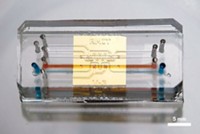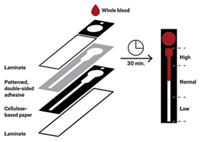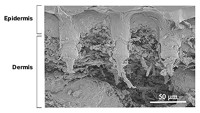Advertisement
Grab your lab coat. Let's get started
Welcome!
Welcome!
Create an account below to get 6 C&EN articles per month, receive newsletters and more - all free.
It seems this is your first time logging in online. Please enter the following information to continue.
As an ACS member you automatically get access to this site. All we need is few more details to create your reading experience.
Not you? Sign in with a different account.
Not you? Sign in with a different account.
ERROR 1
ERROR 1
ERROR 2
ERROR 2
ERROR 2
ERROR 2
ERROR 2
Password and Confirm password must match.
If you have an ACS member number, please enter it here so we can link this account to your membership. (optional)
ERROR 2
ACS values your privacy. By submitting your information, you are gaining access to C&EN and subscribing to our weekly newsletter. We use the information you provide to make your reading experience better, and we will never sell your data to third party members.
Analytical Chemistry
Disease Proteins Spotted In Minutes
Simple device uses silicon nanowires to quickly extract and detect proteins in blood
by Journal News and Community
August 20, 2012
| A version of this story appeared in
Volume 90, Issue 34
A microfluidic chip containing silicon nanowires pulls out biomarker proteins from blood and identifies them in less than 10 minutes (Nano Lett., DOI: 10.1021/nl3021889). To diagnose patients quickly, doctors would like to be able to detect specific proteins that appear in patients’ blood in the early stages of disease. To help meet that goal, Fernando Patolsky, a professor of chemistry at Tel Aviv University, in Israel, designed a chip consisting of two chambers. A user adds a 250-µL blood sample to the separation chamber, which contains a forest of vertically oriented silicon nanowires coated with antibodies that bind the protein of interest. After washing salts and cells out of this chamber, the user adds a buffer that triggers the antibodies to release the biomarkers. The solution then travels to the sensing chamber, which contains horizontal silicon nanowires coated with the same antibodies. There, the proteins bind to the nanowires, change the wires’ conductance, and produce an easily detectable electrical signal. The researchers tested the device with human blood samples spiked with the protein troponin T, a biomarker for heart attacks. In less than 10 minutes, the chip detected the protein at subpicomolar concentrations.





Join the conversation
Contact the reporter
Submit a Letter to the Editor for publication
Engage with us on Twitter